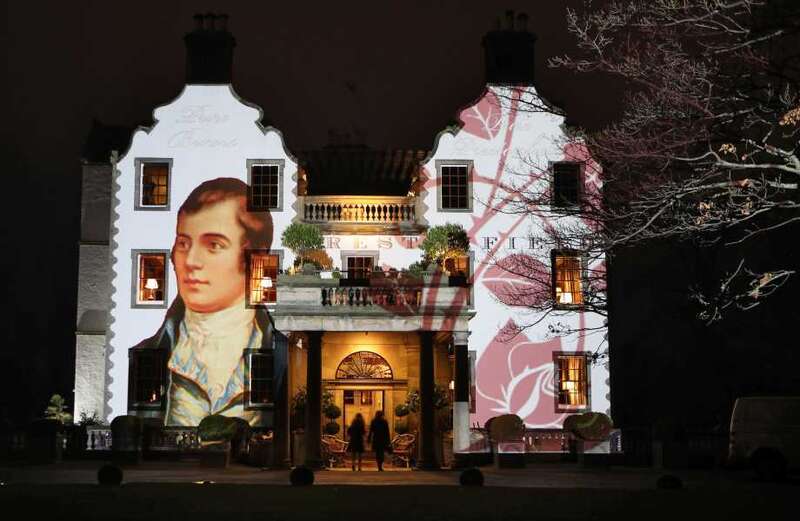ALL around the world Scots look forward to the end of January.
It marks the celebration of the life and times of Scottish poet Robert Burns, with the 25th of the month being a much-loved date to look forward to in the calendar.

What is a Burns Supper?
Burns Night is celebrated on January 25 every year, or as close to it for those unable to commemorate the actual day.
When it was first launched, Burns’ friends decided to hold the event annually on July 21 - the date the poet died, with the first celebration coming five years after his passing.
However, Burns Night nowadays is held every year on his birthday.
 Are there illegal baby names? Surprising monikers that are BANNED in other countries, from Sarah to Thomas
Are there illegal baby names? Surprising monikers that are BANNED in other countries, from Sarah to Thomas
It is traditionally celebrated in Scotland - although the Scottish poet is remembered across the globe.
What's on a Burns Supper menu?
The Burns Night celebration centres on the entrance of the haggis (a type of sausage prepared using a sheep's stomach stuffed with its own heart liver and lungs), which is traditionally piped in to the sound of bagpipes.
As guests gather, Selkirk Grace is said after the host has said a few words.
The dish comes out after the soup course, which is a traditional Scotch broth or cullen skink.
Once the meal is on the table, the host addresses the haggis, often with Robert Burns’ poem Address To A Haggis.
The haggis is then sliced opened and served with neeps and tatties (turnips and potatoes).
A whisky toast is also made to the haggis.
There are usually several other toasts throughout the evening, with the night ending with guests holding hands singing Auld Lang Syne.
If you're hosting a Burns Night get together and have some vegetarian guests, there are still some delicious options such as Macsween, which is available in Tesco, Sainsbury's and Morrisons.
Why do Scots eat haggis?
The haggis is often regarded as Scotland's national food.
 All about Rachel Nickell who was murdered in front of her son Alex Hanscombe
All about Rachel Nickell who was murdered in front of her son Alex Hanscombe
Its origins are shrouded in as much mystery as the Loch Ness Monster.
Some claim that it was brought to the country by the Romans.
Others claim it was the Vikings who invented the dish, before bringing it to Scotland.
When an animal was killed, the offal had to be eaten straight away or preserved.
Not an easy task in a forest, or the middle of a field.
As a result, it would be chopped up, packed in salt and stuffed into the animal's stomach.
It may not sound a pretty sight but this ensured it lasted for a couple of weeks.
Burns immortalised the meal in his poem, Address To A Haggis, which is why it is always eaten on Burns Night.
Who was Robert Burns?
Robert Burns, also referred to as Rabbie Burns or the Bard of Ayrshire, is widely regarded as the national poet of Scotland.
He was born in Alloway, coming from a humble background, Burns grew up with the hard manual labour of farming.
He is best known for his work in the Scottish language, although many of his poems have been translated into English with a light Scots dialect so they can be more widely read.
His most famous work includes Auld Lang Syne, Ae Fond Kiss, Scots Wha Hae, A Red, Red Rose, A Man’s A Man For A’ That, and Tam o’ Shanter.
He became a great source of inspiration to the founders of both liberalism and socialism after his death in 1796.
In 2009, he was named the greatest Scot of all time, in a vote on Scottish TV station STV, beating William Wallace.
Even today, new discoveries are being made about Burns' life.
As with many authors at the time, this was not a financially rewarding occupation, and he continued most of his life as a farmer.
He wrote a song called "Scots Wha Hae" which was the unofficial anthem for Scotland for some 200 years.
Researchers at Glasgow University have been studying his letters, because they suspect the poet was suffering from bipolar disorder.
While experts uncovered what they believe to be Masonic symbols hidden in a portrait of Burns in 2017.
The secret messages, which are invisible to the naked eye, include a comet and a series of letters.
Whichever ideas you take to heart about the poet's life, one thing we can be sure of, Robert Burns' life-works will be revered by the country every January 25.
